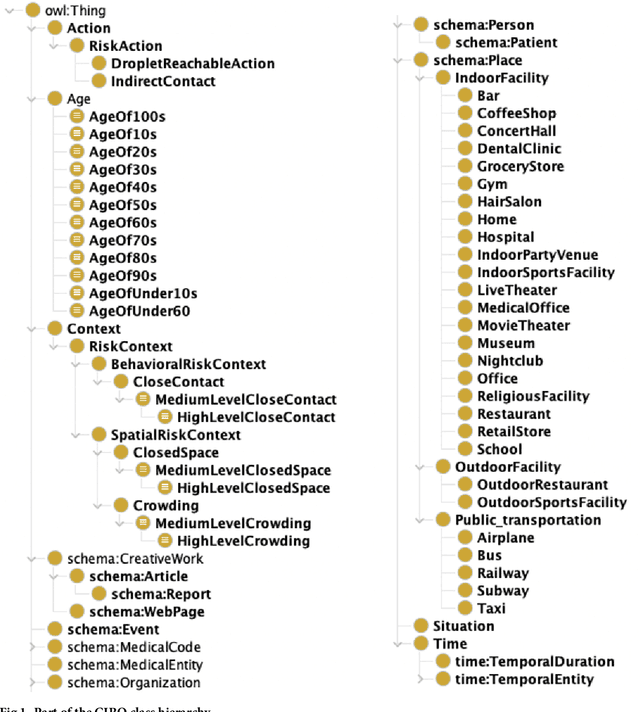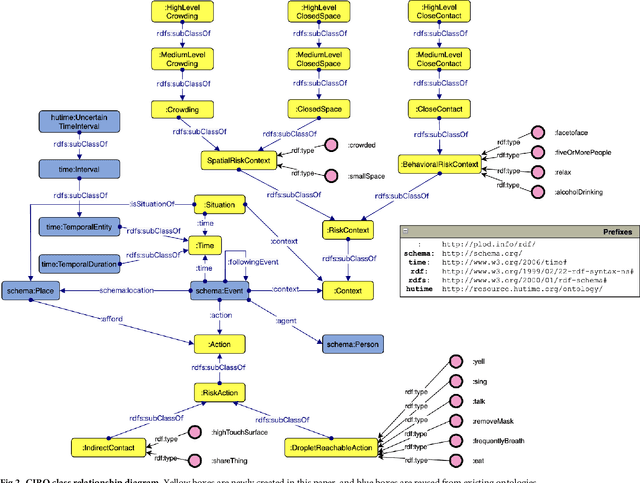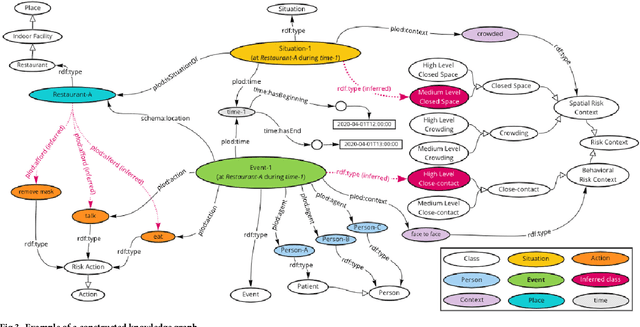Takashi Okumura
CIRO: COVID-19 infection risk ontology
Aug 07, 2023



Abstract:Public health authorities perform contact tracing for highly contagious agents to identify close contacts with the infected cases. However, during the pandemic caused by coronavirus disease 2019 (COVID-19), this operation was not employed in countries with high patient volumes. Meanwhile, the Japanese government conducted this operation, thereby contributing to the control of infections, at the cost of arduous manual labor by public health officials. To ease the burden of the officials, this study attempted to automate the assessment of each person's infection risk through an ontology, called COVID-19 Infection Risk Ontology (CIRO). This ontology expresses infection risks of COVID-19 formulated by the Japanese government, toward automated assessment of infection risks of individuals, using Resource Description Framework (RDF) and SPARQL (SPARQL Protocol and RDF Query Language) queries. For evaluation, we demonstrated that the knowledge graph built could infer the risks, formulated by the government. Moreover, we conducted reasoning experiments to analyze the computational efficiency. The experiments demonstrated usefulness of the knowledge processing, and identified issues left for deployment.
* 18 pages, 8 figures, and this paper has been accepted by PLOS ONE
Is In-hospital Meta-information Useful for Abstractive Discharge Summary Generation?
Mar 10, 2023



Abstract:During the patient's hospitalization, the physician must record daily observations of the patient and summarize them into a brief document called "discharge summary" when the patient is discharged. Automated generation of discharge summary can greatly relieve the physicians' burden, and has been addressed recently in the research community. Most previous studies of discharge summary generation using the sequence-to-sequence architecture focus on only inpatient notes for input. However, electric health records (EHR) also have rich structured metadata (e.g., hospital, physician, disease, length of stay, etc.) that might be useful. This paper investigates the effectiveness of medical meta-information for summarization tasks. We obtain four types of meta-information from the EHR systems and encode each meta-information into a sequence-to-sequence model. Using Japanese EHRs, meta-information encoded models increased ROUGE-1 by up to 4.45 points and BERTScore by 3.77 points over the vanilla Longformer. Also, we found that the encoded meta-information improves the precisions of its related terms in the outputs. Our results showed the benefit of the use of medical meta-information.
 Add to Chrome
Add to Chrome Add to Firefox
Add to Firefox Add to Edge
Add to Edge